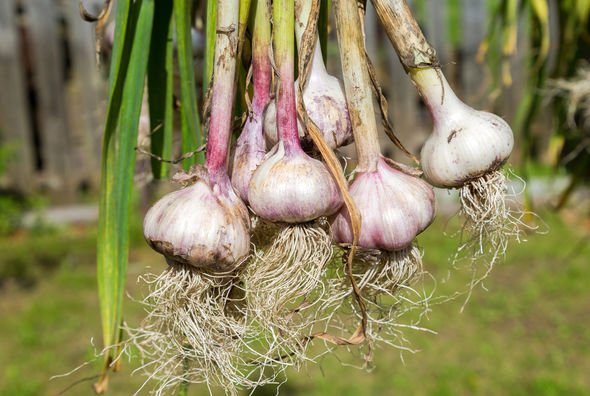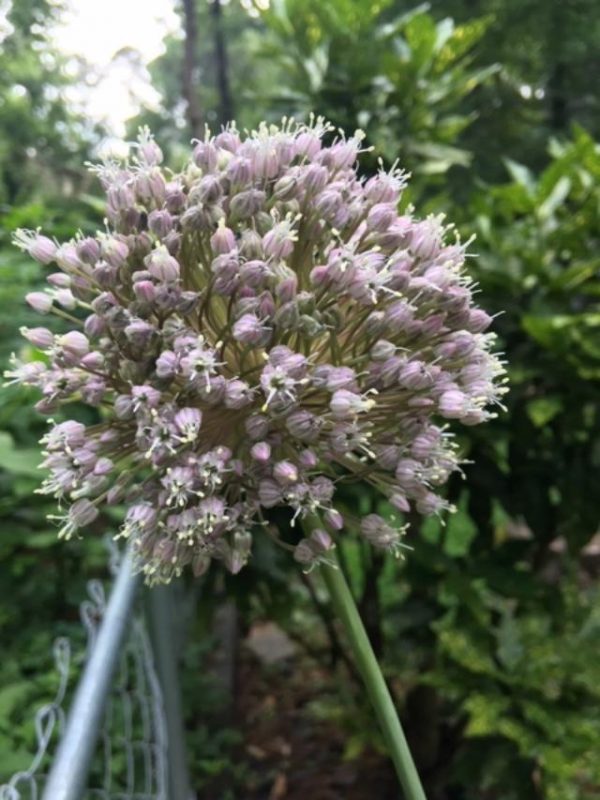The Art of Harvesting Garlic

Garlic stands as a beloved staple in kitchens around the globe, prized for its sharp aroma, bold taste, and impressive health perks. Whether incorporated fresh, roasted to soften its flavor, or stored for future use, the key to premium garlic lies in harvesting it at just the right moment using proper techniques. Picking too soon results in undersized, less flavorful bulbs; waiting too long risks cloves splitting or losing their ability to store well. This guide walks home gardeners through the best timing and methods to harvest garlic, ensuring a rich, flavorful yield with excellent shelf life.
Decoding Garlic’s Growth Phases
To nail the perfect harvest time, it’s crucial to recognize garlic’s developmental stages:
-
Vegetative Phase
Garlic starts from a single clove planted in soil, focusing on root and leaf growth which lays the foundation for bulb formation. -
Bulb Initiation Phase
Occurring weeks after planting, this stage marks the slowdown of leaf growth as the clove begins to thicken underground, though it’s still immature. -
Bulb Maturation Phase
Energy shifts from leaf production to expanding the bulb. Yellowing and dying leaves signal that the garlic is nearing harvest readiness.
Understanding these phases helps pinpoint the ideal window to harvest for peak flavor and durability.
How to Tell When Garlic Is Ready
Timing is everything for garlic that tastes great and stores well. Watch for these signs:
-
Leaf Color and Condition
Partial yellowing of leaves is the best indicator. When 2 to 3 of the lower leaves turn brown but the upper leaves stay green, the bulbs are mature. Avoid harvesting once all leaves have browned, as this can mean cloves are splitting or vulnerable to rot. -
Clove Size and Bulb Development
Carefully unearth a bulb to check its size. Mature garlic bulbs have fully developed, plump cloves wrapped tightly in papery skin. -
Soil and Weather Conditions
Well-drained soil and steady moisture promote even maturation. Excessive rain or prolonged dampness near harvest time can increase rot risk, so timing is critical.
Selecting the Ideal Garlic Variety
The type of garlic you grow influences harvest timing, flavor, and storage life:
-
Hardneck Garlic
Yields fewer but larger cloves with a rich, complex flavor, favored for roasting or fresh use. Best harvested a bit earlier than softneck varieties to prevent splitting. -
Softneck Garlic
Produces more numerous, smaller cloves with a milder taste and longer shelf life, making it perfect for braiding. Can stay in the ground slightly longer without splitting. -
Varietal Highlights: Rocambole, Porcelain, and Artichoke
Each offers distinct flavor and storage traits. Hardneck types like Porcelain and Rocambole boast strong flavors but moderate storage duration, while softneck Artichoke varieties can be stored for 6 to 9 months when harvested properly.
Getting Ready for Garlic Harvest
Proper preparation before picking garlic helps prevent damage and keeps its flavor intact:
Essential Tools
- Use a garden fork or spade to gently loosen the soil.
- Wear gloves to protect your hands.
- Have a knife or scissors handy for trimming roots and leaves.
When to Harvest
- Opt for a dry day to minimize rot risk and make curing easier.
- Avoid harvesting during rain or high humidity.
Soil Prep
- Lightly moisten the soil a day or two before harvesting to soften it without turning it muddy.
- Be careful not to overwater, as this can cause bulbs to split and encourage fungal infections.
Harvesting Garlic to Preserve Flavor
Using the right techniques ensures the garlic retains its taste, texture, and shelf life:
Loosening the Soil
- Carefully lift bulbs with a fork or spade, avoiding any punctures or bruises to the cloves.
Avoid Pulling
- Never yank garlic by hand; this can harm roots and cloves, shortening storage life.
Handling the Bulbs
- Gently shake off excess dirt but do not wash the bulbs, as moisture can lead to rot.
- Keep the outer papery skin intact to protect the cloves.
Timing Tips
- Harvest when bulbs are fully developed but leaves still show some green.
- Picking slightly early yields milder, sweeter garlic; waiting longer increases pungency but may reduce how long it stores.
Curing Garlic for Longevity and Flavor
Proper curing extends storage life and intensifies flavor:
Ideal Environment
- Choose a dry, airy spot away from direct sunlight.
- Maintain temperatures between 60–70°F with good ventilation.
Curing Process
- Spread bulbs on racks or screens, or hang them in bundles by their leaves.
- Allow 2 to 4 weeks for thorough drying.
- Well-cured garlic develops tight skin, concentrating sugars and essential oils for a richer taste.
Trimming After Curing
- Cut roots close to the bulb.
- Trim leaves to about an inch above the bulb before storing.
Storing Garlic for Maximum Freshness
Proper storage keeps garlic flavorful and prevents spoilage:
Temperature
- Store in a cool, dry, dark place.
- Ideal short-term storage temperature is 60–65°F; cooler conditions are better for longer storage.
Airflow
- Use mesh, paper bags, or baskets to ensure good air circulation.
- Avoid plastic bags, which trap moisture and encourage mold.
Shelf Life
- Softneck garlic lasts 6–9 months.
- Hardneck garlic keeps for 3–6 months.
- Regularly check for soft or sprouting bulbs and remove them to protect the rest.
Tips to Maximize Garlic Flavor
- Harvest at the right stage: partial yellowing of leaves signals peak flavor.
- Cure properly to concentrate essential oils and enhance aroma.
- Avoid overwatering near harvest to prevent flavor dilution and rot.
- Handle bulbs gently to avoid bruising, which leads to spoilage.
- Consider variety: hardneck types offer stronger, complex flavors; softneck types are milder and store longer.
Avoid These Common Garlic Growing Errors
Picking Too Soon
- Results in tiny, immature cloves that lack robust flavor and don’t store well.
Delaying Harvest
- Can cause bulbs to crack or decay; cloves might develop an overpowering sharpness or become tough.
Incorrect Drying Methods
- Exposing garlic to direct sunlight or moist environments during curing can weaken its taste and shorten shelf life.
Suboptimal Storage Conditions
- Storing garlic in warm, humid places encourages sprouting and mold growth, which spoil flavor and reduce longevity.
Final Thoughts
Timing your garlic harvest precisely is crucial to capturing the ideal mix of taste, texture, and durability. By recognizing the plant’s growth phases, watching for leaf yellowing, and treating bulbs gently, gardeners can secure a plentiful, premium-quality crop. Proper drying and storage techniques help maintain garlic’s potent aroma and rich flavor over time. Whether used fresh, roasted, or preserved, adhering to these guidelines ensures home gardeners enjoy flavorful garlic that lasts. With mindful timing, careful handling, and suitable storage, garlic transforms from a simple ingredient into a cherished homegrown delight that elevates every dish.
Garlic Importance and Quality Factors
- Garlic prized worldwide for aroma, flavor, and health benefits
- Quality depends on harvest timing and method
- Early harvest: small, less flavorful bulbs
- Late harvest: split cloves, poor storage
Garlic Growth Stages
- Vegetative: root and leaf growth from planted clove
- Bulb Initiation: clove thickens underground as leaf growth slows
- Bulb Maturation: energy shifts to bulb enlargement; leaves yellow and die back
Harvest Readiness Signs
- Partial leaf yellowing (2–3 lower leaves brown, upper leaves green)
- Mature bulbs have plump, tightly wrapped cloves
- Well-drained soil and consistent moisture aid uniform maturation
Garlic Varieties and Harvest Timing
- Hardneck: fewer, larger cloves; rich flavor; harvest earlier to avoid splitting
- Softneck: more, smaller cloves; milder flavor; longer storage; can stay in ground longer
- Rocambole, Porcelain (hardneck): strong flavor, moderate storage
- Artichoke (softneck): milder, stores 6–9 months
Harvest Preparation
- Tools: garden fork/spade, gloves, knife/scissors
- Harvest on dry days; avoid rain/humidity
- Lightly water soil 1–2 days before harvest
Harvesting Techniques
- Loosen soil gently; avoid pulling bulbs
- Shake off soil, do not wash
- Leave papery skin intact
- Harvest when bulbs formed but leaves partly green
Curing for Storage and Flavor
- Dry, ventilated area, 60–70°F, away from sunlight
- Lay bulbs on racks or hang bundles for 2–4 weeks
- Trim roots and leaves after curing
Storage Guidelines
- Cool, dry, dark place; 60–65°F ideal
- Use breathable containers (mesh, paper bags)
- Softneck lasts 6–9 months; hardneck 3–6 months
- Remove soft or sprouting bulbs regularly
Maximizing Flavor Tips
- Harvest at partial leaf yellowing
- Cure properly to concentrate oils
- Avoid overwatering near harvest
- Handle bulbs gently
- Choose variety based on flavor and storage needs
Common Mistakes to Avoid
- Harvesting too early: small, mild cloves
- Harvesting too late: split, rotting bulbs
- Improper curing: sun or humidity damage
- Poor storage: warmth and moisture cause spoilage
Conclusion
- Right timing balances flavor, texture, and shelf life
- Understanding growth and leaf color guides harvest
- Proper curing and storage extend freshness
- Following best practices yields flavorful, long-lasting garlic
- Garlic becomes a treasured homegrown ingredient enhancing meals
